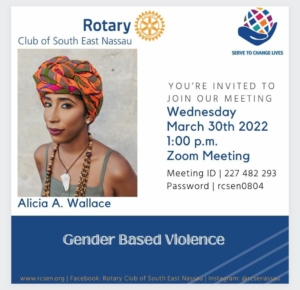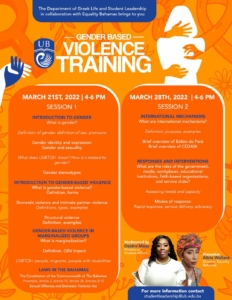The Prime Minister said, “Rape is rape!” Women’s rights advocates have been saying this for years. Rape is rape! Rape is rape! Wherever it happens, whoever is involved, rape is rape. There are no exceptions.
The rest of what the Prime Minister said, however, is nonsense. The rest of what he said, in fact, was contradictory. The rest of what he said was irresponsible and misleading. The rest of what he said was what we, by now, have come to expect from him—unwillingness to state a clear position and a singular commitment to obfuscation.
“Why do you want to describe rape? Rape is rape.”
Well, for all who are as confused as the Prime Minister, the statement “Rape is rape” means that rape in all forms, by any person with or without any kind of relationship to the person violated, is rape. Rape of an underage person is rape. Rape on a hotel property is rape. Rape in the morning is rape. Rape by a spouse is rape. In the statement “Marital rape is rape,” we see that “marital” is used as an adjective, indicating that the rape being discussed is rape by a spouse. It is both more succinct and wholly accurate. The reason we use the term “marital rape” is not a suggestion that it is not rape, but an affirmation that it is, in fact, rape. It is not that we are creating a category of rape, but that we are calling attention the distinction that is made in the law—a distinction that dehumanizes married women, violates the right to bodily autonomy, violates the right to be free from violence, and violates the right to be seen and treated as person before the law. “Marital rape” is a necessary term within this context—the violent, misogynistic Bahamian context—where there is no recourse for a women who raped by her spouse.
Rape is, as the Prime Minister put it, divided into categories. This does, indeed, present a problem. Rape is rape! All forms of rape are wrong. Whether rape takes place in the morning or at night, perpetrated by a person known or unknown to the person violated, it is rape. Sexual intercourse without consent is, without question, rape. The Sexual Offenses Act, however, does not align with this fact. Not only are there several “categories” of sexual violence in the Act, the definition of rape in Section 3 has a marital exclusion, hence the term “marital rape” in the advocacy to amend the law. Because the Act creates this exclusion, we must be intentional in naming the exclusion.
The definition of rape in Section 3 of the Sexual Offenses Act says, “Rape is the act of any person not under fourteen years of age having sexual intercourse with another person who is not his spouse —[without consent].” The issue with the definition is that it provides an exception for people who are married to the people they rape. “Rape is rape,” the Prime Minister said, but the law does not say the same, and his administration has the power to change it.
The definition of rape in the Sexual Offenses Act limits rape to non-consensual sexual intercourse that occurs outside of a marriage. The law, then, recognizes rape perpetrated by stranger, a parent, a sibling, a boyfriend, a teacher, an acquaintance, and a host of other people. It very specifically and deliberately does not recognize nonconsensual sexual intercourse, which is rape, that is perpetrated by a spouse. Again, this is an exception on the basis of marriage. It creates a “category” of rape that is permissible by the Sexual Offenses Act (while in contravention with international human rights standards and commitments that The Bahamas has made through its ratification of various conventions including the Convention on the Elimination of All Forms of Discrimination against Women (CEDAW) and the Inter-American Convention on the Prevention, Punishment, and Eradication of Violence against Women (Belém do Pará).
Given this, it important to look at Section 15 on sexual assault by spouse. In this section, the drafters determined that there is a narrow set of circumstances under which nonconsensual sexual intercourse perpetrated by a spouse is a criminal offense. They decided that this nonconsensual sexual intercourse, which is understood to be rape in other cases, is going to be in a different category. Rather than rape, it is called “sexual assault by spouse.” This, then, is another “category” of rape.
Section 6 is the first that addresses indictable sexual offenses and states that “Any person who commits rape is guilty of an offence and liable to imprisonment for life, subject to, on a first conviction for the offence, a term of imprisonment of seven years and, in the case of a second or subsequent conviction for the offence, a term of imprisonment of fourteen years.” Terms of imprisonment vary from one “category” to another. Again, note that women’s rights advocates have not created these categories. They exist in the law.
Section 15 states “Any person who has sexual intercourse with his spouse without the consent of the spouse —[where there is a decree nisi of divorce; a decree of judicial separation; (a separation agreement; or an order of a court for the person not to molest or co-habit with his spouse[…] is guilty of the offence of sexual assault by spouse and liable to imprisonment for a term of fifteen years. In addition, prosecution requires “consent of the Attorney-General.” It is clearly rape, though given another name and treated differently by the law, and putting up an additional barrier to reporting and accessing justice, again, privileging the rapist who is married to the person they sexually violate.
“Rape is rape, whether you’re married or unmarried and the challenge they are having is describing it,” the Prime Minister said.
Who is the “they” being referenced by the Prime Minister? Women’s rights advocates are not trying to “describe” rape. We are using appropriate language to specify that the rape of a person by their spouse is currently not considered, in Bahamian law, to be an act of sexual violence, and it ought to be. As the Prime Minister said, rape is rape! The most direct and clear way to discuss this issue is to use the succinct term “marital rape” until the necessary amendments are made to the Sexual Offenses Act to remove the words “who is not his spouse” from the definition of rape. Then we can talk about rape without the adjective “marital.”
The Prime Minister said, “We passed a bill… a bill against violence against persons[…] that covers any manner of degradation, or what I call behavior that’s not acceptable to society.”
This is, quite simply, incorrect. The “Protection Against Violence” Act is an embarrassment. It was rushed, bypassing consultation processes, in order to displace—and perhaps get people to forget about—the Gender-Based Violence bill. We have not forgotten the Gender-Based Violence bill which has been in draft since 2016. Equality Bahamas has been calling for the Gender-Based Violence bill to be updated and passed for several years, and this has been one of its demands during the Global 16 Days Campaign since 2020. The CEDAW Committee, in 2018, expressed its concern about “the lack of a comprehensive law addressing violence against women and the delay in finalizing and adopting the draft bill on gender-based violence and the draft national strategic plan to address gender-based violence.” The Committee called on the Government of The Bahamas to “accelerate the adoption of the comprehensive draft bill on gender-based violence and the draft national strategic plan to address gender-based violence, in line with the Committee’s general recommendation No. 35.”
Successive administrations have failed to act on the recommendations to move closer to compliance with CEDAW and other international human rights mechanisms. The “Protection Against Violence” Act does not meet the requirements. It is not a gender-based violence bill and it does not address gender-based violence. It absolutely does not “cover any manner of degradation” and certainly does not, as the Prime Minister seemed to suggest, address the issue of marital rape.
The so-called Protection Against Violence Act states as its purpose “to provide for a national strategy to prevent and respond to the occurrence of violence and to protect victims of violence by promoting a strong multi-disciplinary community and services for the comprehensive management of victims and offenders; a system of information gathering for the purpose of generating reliable statistics in instances where violence in domestic relationships results in death; compliance with regional and international human rights treaty obligations of The Bahamas.”
In summary, the “Protection Against Violence” Act is meant to provide a strategy to prevent and streamline responses to violence, collect data on death due to domestic violence, and meet international human rights obligations. The Act has sections on developing and implementing a national strategic plan (which, we must remember, was already published in 2015 and has been collecting dust instead of being implemented or, at this point, significantly and substantively updated), institutional strengthening, establishment of a foundation, establishment of a commission, establishment of a secretariat and appointment of a director, general rights of victims, procedure for handling complaints, care and support services (including housing and legal assistance) which apply only to victims of sexual abuse, protocol when violence results in death, establishment of a violence fatality review team, and administrative details related to the bodies to be established.
The “Protection Against Violence” Act does not, in and of itself, propose prevention. It does not present a strategy. It does address marital rape at all. It focuses on the establishment of bodies and structures. It is not the kind of law that people imagine when they read or hear the title. The law that address sexual violence is the Sexual Offenses Act and it, as explained, does not acknowledge that rape is rape. The marital exception is cruel, violent, dehumanizing, and does not have to exist.
All we need is a Prime Minister who cares. Members of Parliament who care. Who are not lazy. Who are not complicit. Who are not more concerned about reelection than addressing the pervasive issue of gender-based violence and, in particular, violence against women that is perpetrated by a spouse or intimate partner. We need legislators who know and understand the law. Who are prepared to work together to amend the law so that marital rape is, legally, rape. It only takes one Member of Parliament to take a bill to Parliament. Thus far, not a single member has cared enough to do it. What great evidence of where we are as a country, with our “representation” in the government and its priorities.
Recommendations
- Join the call to criminalize marital rape. Learn more about the #Strike5ive campaign by Equality Bahamas at tiny.cc/strike5ive.
- Read the Sexual Offenses Act. Pay attention the definition of rape, the forms of sexual violence that are included, and the differences in sentences.
- Read the “Protection Against Violence” Act. There was no consultation on the bill before it was rushed to be passed, bypassing the Gender-Based Violence bill which was mid-consultation and has been recommended by numerous bodies including the CEDAW Committee in 2018 and Member States of the United Nations at the Universal Periodic Review in 2023. Understand what is and is not in the Act. The misinformation being spouted by this administration is not accidental, and it is not hard to miss if you read the text yourself, looking for the changes it is expected to make.




